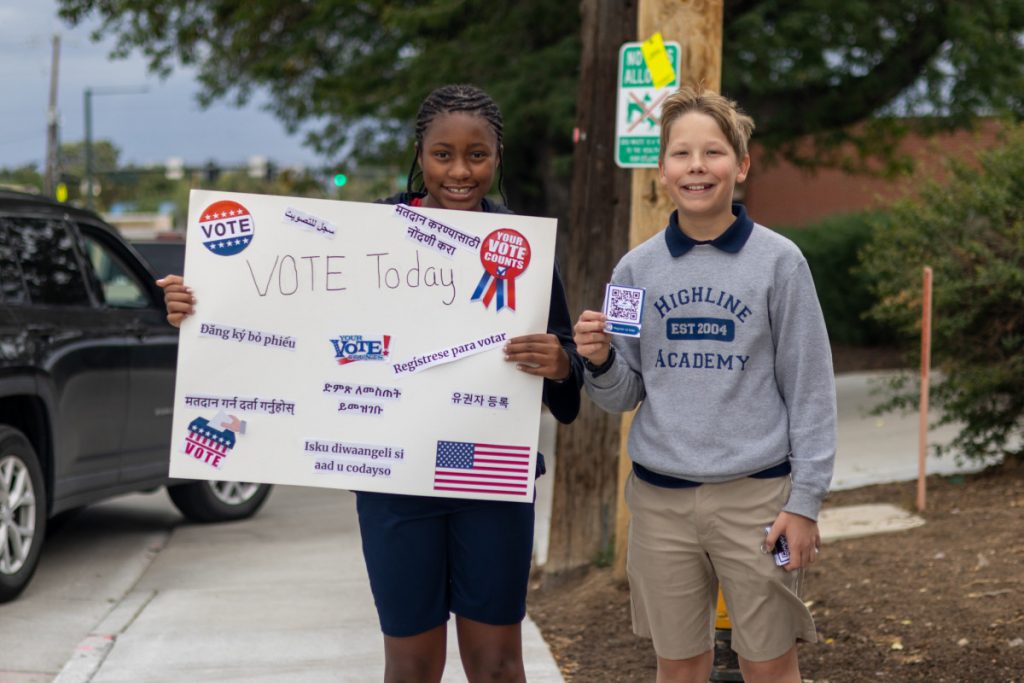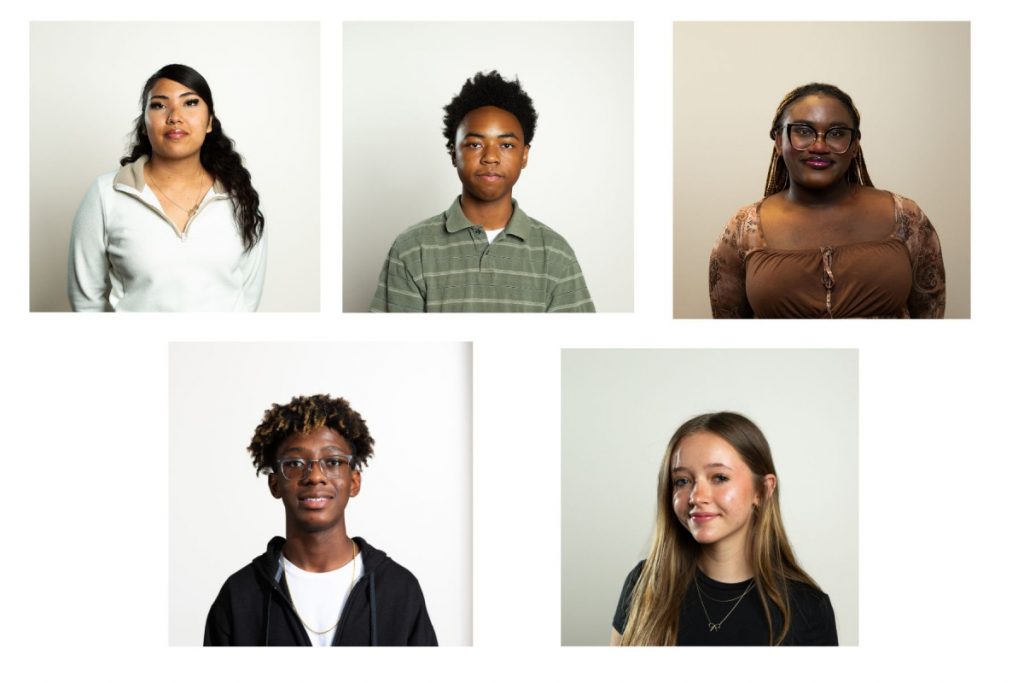Editor’s note: This article was written by Aaron Massey, a Senior Director at Generation Schools Network. Aaron has served as Principal of Strive Prep RISE in far northeast Denver and has been in education for more than 10 years. Prior to moving to Denver, he served as a middle school math teacher and district math trainer in Baton Rouge, La. and a community organizer in St. Louis and East St. Louis. Aaron has a Master’s in Urban Education Policy from Brown University, a Bachelor’s in Sociology from Illinois Wesleyan University, and is currently a doctoral student at Vanderbilt University.
Attention all large urban school district superintendents, to have a successful school year, abandon every piece of technology you have in your entire district.
Much of the research, many data points, every teacher and school leader, and every student, if they are all being honest with themselves (and I mean all of us), knows that “technology” in large urban school districts is not working. For the non-believers, those that will groan about the future being technology, I have something for you below. Let’s take this step by step.
Pew Research Center reports that 95% of teens have access to a smartphone. 45% say they are “almost constantly” on the internet (Shaefer, 2019). Although the number is not exactly clear, recent research suggests that the average cell phone user touches his or her phone 2,617 times a day (Naftulin, 2016). In the same time frame, the CDC reports, one in three high school students had experienced persistent feelings of sadness or hopelessness in 2019, a 40 percent increase since 2009 (2019).
This is not a coincidence. It’s a consequence of an earlier onset of puberty (Ghorayshi, 2022), impacts of Covid-19 on mental health (Elharake, 2022), and a culture of constant comparison and inundation of information from social media platforms, streaming platforms, and the like (Albano, 2021).

Instead of engaging in political discourse through a historical and socio-political collaboration between the Social Sciences & ELA department while simultaneously bringing in the art teacher for a visual display of student-led expression, students are having their attention and memory impaired during lectures while creating noticeable distractions by sending text messages, subsequently reducing learning. And this happens “10-15 minutes into the lecture” (Mendoza et. al, 2018).
Every time they get a “like,” a “reaction,” an emoji, a shot of dopamine goes straight to the brain. Students go back and forth spending time rewarding and punishing each other using those types of “technological currencies.” Economist and Nobel Laureate Herbert A. Simon calls this the “attention economy.” They spend all day building each other up and tearing each other down in the middle of physics class.
Simply put: adolescents are experiencing an internal war perpetuated by technology.
And for large urban school districts, we already knew this. Quick test: Go ask any teacher in your school district this same question. What happens when you take a Chromebook from a student? EVERY SINGLE ONE OF THEM had a flash of at least one moment that was the worst power struggle with a dash of temper tantrum mixed in. And that’s not because our students aren’t brilliant; it’s because they’re distracted.
Now try this experiment with every child in your school that has a computer. Show them this article. Read it aloud and have a classroom discussion on the impacts of technology and their ability to stay engaged with this conversation starter (you’re welcome homeroom teachers): For the entire school day, did you stay only on websites that you were directed to from your teacher? EVERY SINGLE ONE OF THEM either played a game, or all of them played a game at the same time together, or YouTube, or Tik Tok…
Now I want you to multiply that by every student, in every classroom, in every district, in every state in this entire country.
Superintendents, we need your leadership in these difficult times in education. Post-quarantine times. High adjustment times. Burn-out times. Quiet quitting times.
And for all of the arguments that “technology is the future of work and life… and look at all of those jobs in the future… and EVs” …a word: Large urban school districts’ usage of technology is very different from how private, elite, affluent, tech-based, often White districts use technology.
Large urban districts, on average, have one-to-one computers; maybe tablets. Maybe a rarely used 3D printer. A laminator if teachers are lucky. Radios. And a couple of landlines.
You enthusiasts are imagining tech labs with podcast studios, wings of planes being built, and AI technology. I know because I got those examples from three private schools I recently visited. Large urban school districts do not have this level of resources.
Subsequently, students in these districts are getting less involved, less meaningful exposures to technology that doesn’t lead to those future careers in technology. Instead, they are getting more access to tools of distraction. And while Class Dojo, shared Google Docs, and Kahoot appear harmless, they are a small handful of a larger package of technology that is having adverse effects on students.
Superintendents of large urban districts: GET RID OF IT. No cellphones. None. No Chromebooks. No smart boards. No tablets. None of that stuff.
If we want to save the thousands of current students, Black and Brown students alike, we must stop it. Right now, we have early signs of the effect of what I like to call “compounded technology impacts:” Less attentive students, “Devious Licks”(they literally community organized on an app to put paper towel dispensers into toilets)…bullying, fighting/instigating fighting, suicidal ideation websites, and generations of children who are experiencing record levels of anxiety and depression.
It’s time to be the leaders we need right now.
And here is what I can promise you. I can promise you your students will be more attentive. I can promise you they would learn more content at a level of depth that would impress themselves and you. I can promise test scores will go up.
Pick any measure of success you want. Teachers would have more time with their content with less distractions, less interruptions, and less power struggles. Not to mention teachers may find more satisfaction and meaning in their work, which could lead to higher teacher retention.
Superintendents, you could reroute the money you use for all those Chromebooks you have to buy each year, now, and invest in what students are actually struggling with right now: mental health.
But what about parents? Won’t they be upset about the change and move out of my school district? Explain this to them: As a young Black, former school principal, I’ve broken up young ladies slamming each others’ heads against the floor because of video recordings that erase. I’ve held back gang members, who are in a lot of pain, from fighting in the middle of the hall because one threatened to shoot another in a text message.
I’ve waited for an ambulance to pick up a suicidal student because of pictures of her floating around in group messages across the school.
Parents, the threat of gun violence is not just on the streets. The threat of gun violence is in the schools. We see it every day. If we are to disrupt school shootings, it starts with disrupting the source and tools that are, frankly, taking students away from themselves. We need your help to stop this. We have to stop this together.
This won’t be an easy transition.
But superintendents, you didn’t get in that seat for easy. You know what it takes to lead. Right now, it takes making the right decision for those students you see everyday.
Get rid of it.




